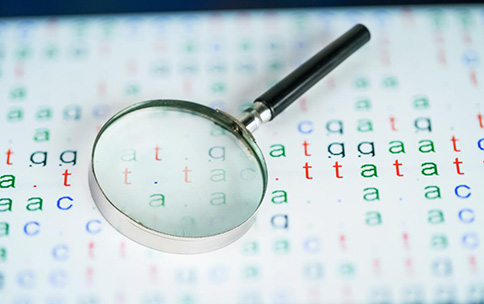
The structure of the genetic material (genome) inside cell nuclei plays an important role in regulating cellular processes. The primary units of genetic control are called enhancers, which are regions of DNA that can physically interact with proteins and other sections of DNA called promoters to activate genes. Enhancers can exist at great physical distances from the genes they regulate but are brought into close proximity by folding of genomic areas. Our understanding of how genome structure affects genetic activity is limited by our ability to measure what parts of the genome are near each other. Scientists have previously created methods to detect associations between regions of the genome, but these methods do not do so at a fine enough scale to track interactions between individual enhancers and promoters. Furthermore, existing methods that can map the genome at a higher resolution are very expensive and inaccessible to many genomic researchers.
Dr. Anders Hansen, a 2020 NIH Director’s New Innovator Award Recipient grantee from the Common Fund High-Risk High-Reward program and a member of the 4D Nucleome program, has created a method called Region Capture Micro-C (RCMC) that maps physical interactions in the genome at 100 times higher resolution than existing approaches. RCMC involves linking together regions of DNA that are close in the genome, selecting specific genetic sequences in areas of interest, and sequencing the DNA around those areas to find out what other parts of the genome interact with those targeted regions. Targeting genetic sequences of interest allows high-resolution results at lower cost compared to previous techniques that survey the whole genome, and the authors showed that RCMC revealed contacts between parts of the genome that other methods missed.
Dr. Hansen and his team used RCMC to study the organization of DNA around genes involved in embryonic development. They found interactions with enhancers that activate those genes that had never been seen before. They also found contact between regions of DNA coiled tightly into what the authors called ‘microcompartments’. These microcompartments, which form through an unknown mechanism that may involve ‘sticky’ regions of DNA condensing together, seem to bring together many enhancers and promoters. Understanding how these microcompartments and enhancer-promoter interactions change over time during development may open new pathways to understand and treat diseases that affect gene regulation. RCMC will allow genomic investigators to study these processes with a cheap, fast, and high-resolution tool.
Read more about Dr. Hansen’s research as part of the High-Risk High-Reward and 4D Nucleome programs.
Reference
Region Capture Micro-C reveals coalescence of enhancers and promoters into nested microcompartments. Goel VY, Huseyin MK, Hansen AS. Nat Genet. 2023 Jun;55(6):1048-1056. doi: 10.1038/s41588-023-01391-1.


